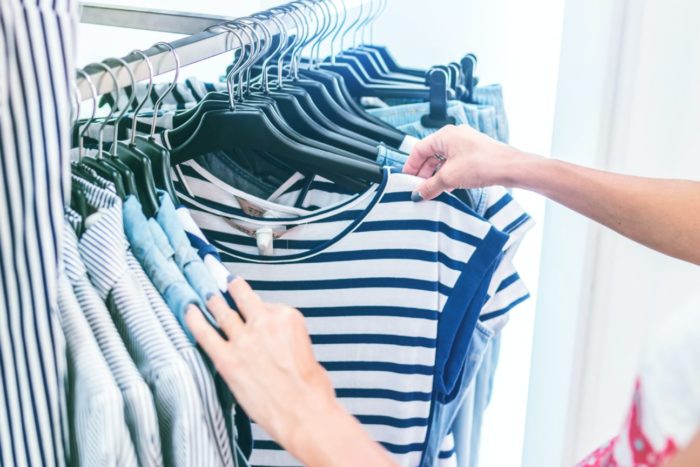For consumers, little thought is given to walking into a brick-and-mortar store, finding the right product quickly and easily, and checking out with no hassle.
Behind the scenes, however, is a completely different story.
For brands and retailers, especially in the consumer packaged-goods space, the opposite is true. A lot of thought and effort goes into the shopper experience and ensuring that customers can find exactly what they’re looking for.
This is the quest for the perfect store.
What Is a Perfect Store?
A perfect store is the alignment of product, price, place, promotion, people, and process—also known as the “6 Ps”—to guide shoppers to your desired products exactly where you want them, with the highest chance of getting them to buy.
How you define a perfect store, and what goes into it, varies slightly based on your market, your category, the store itself, and other factors. But overall, it is the culmination of all your sales, marketing, and category management efforts into a seamless shopper experience that directly leads to your intended result.
Category managers, shopper insights teams, field teams, and other professionals work together to build the perfect strategy, which includes:
- How shoppers will behave inside a store, and how they’ll interact with your brand, promotions, displays, and planograms.
- Managing adjacencies, facings, and other on-shelf considerations.
- Ensuring that there are little-to-no out-of-stocks in the store.
- Working alongside the retailer or brand for maximum teamwork.
Even more aspects can go into creating a perfect store, depending on your company and category. All in all, it’s the sum of all your efforts to achieve the most sales possible—and the happiest customers.
A perfect store is the alignment of product, price, place, promotion, people, and process—also known as the “6 Ps.”
Hallmarks of a Perfect Store
What does a perfect store execution look like in practice? It helps to put yourself in the shoppers’ shoes.
For starters, this level of retail execution begins when the customer walks into the store. They’ll be greeted by displays that are set up properly, and clean stores with a natural layout that guides them toward top-selling products.
Once they reach the shelf—quickly and easily—they’ll find it fully stocked, with a strong assortment of products and brands. Their eyes will be drawn exactly where you want them to go, and they’ll have the product they want in their carts in seconds.
Once at the shelf, the perfect store isn’t done yet. Shoppers will also be tempted to buy more, increasing their basket sizes. Impulse purchases are one hallmark of a perfect store.
By the time their carts are full, customers have an easy time navigating to checkout, paying, and being on their way in just a few minutes.
All of this to say that a perfect shelf is made of several key components:
- Shelf Space Hierarchy – Using SKUs, determine which products generate the most sales and are in the highest demand, and make sure they are especially well-stocked
- Brand Blocking – Keep brand product facings blocked to create a larger visual impact, making items easier to find
- Adjacencies – Place complementary products alongside each other to maximize sales and make purchasing easier. For example: placing a battery display in or near the electronics section, as they are often bought together.
- On-Shelf Availability – Ensuring that the right products are on the right shelf at the right time is crucial and minimizing negative store experiences for shoppers.
A perfect store should feel like an ideal shopping experience for customers.
However, pulling this off is easier said than done, and it truly requires teamwork from both brand and retailer to make it happen.

How to Create a Perfect Store
So then, where do you begin?
You make this lofty goal much more manageable by focusing on a few specific areas first:
No. 1: Start with Shopper Insights
You can’t create effective displays, stock the proper assortment, or build a successful planogram without first knowing what your shoppers want from you.
Every shopper enters the store with different needs and motivations. Are they here for their normal weekly shop or are they looking for something specific?
On your quest for a perfect store, start with shopper insights. Understand their needs, how they behave inside stores, and which products they gravitate toward.
Importantly, know how much they’re willing to pay. Naturally, this is the time to lean heavily on the shopper insights experts within your company. You need to know what would make shoppers choose your products over others.
No. 2: Prioritize Your Efforts
Prioritization is a must any time you have a long list of items to tackle in front of you. When it comes to a perfect store, this means capturing in-store data to find your execution strengths and weaknesses.
Are you already winning on price? Perhaps you don’t have any issues with out-of-stocks shelves or your supply chain, but display compliance hasn’t been doing as well, and your in-store promotions aren’t performing the way you want.
By paying attention to all of these things, you can identify which of the “6 Ps” to focus on first, making a perfect store a little easier to achieve.
Perfect store execution might sound unattainable at first, but it is quite possible if you align your teams and work toward a common goal.
No. 3: Delegate and Execute
Once you know where to begin, make sure you’ve enabled your teams to go out and execute.
Don’t assign one employee or one department with the entire task of creating a perfect store. Instead, spread out the workload across various team members.
This will include category managers, pricing analysts, shopper insights, sales, marketing, and more. Give each person a dedicated role and responsibility so they can be hyper-focused on the end goal.
No. 4: Measure, Test, and Iterate
Lastly, you need to know whether your efforts have changed anything at the shelf. Are you selling more? Is display and planogram compliance up? Are prices optimized? Get out into the field and capture that data.
Look at the key metrics of availability, visibility, display, and value. Be mindful of changing retail conditions and shopper sentiment. Once you have the data, compare it to a pre-determined set of KPIs and then iterate on your perfect store strategy. Be consistent with testing, trying, and building on what you already have.
Perfect store execution might sound unattainable at first, but it is quite possible if you align your teams and work toward a common goal. Odds are, you have aspects of a perfect store in place already. It’s just a matter of identifying your weaknesses and adjusting until you’re closer to your definition of “perfect.”
Editor’s Note: Contributing writer is Alexandria Flores. This post was originally published in February 2021 and has since been updated and refreshed for readability and accuracy.














